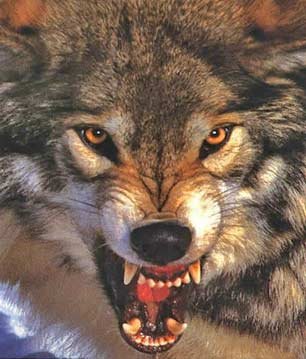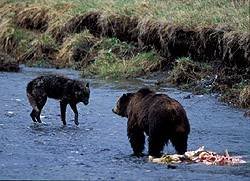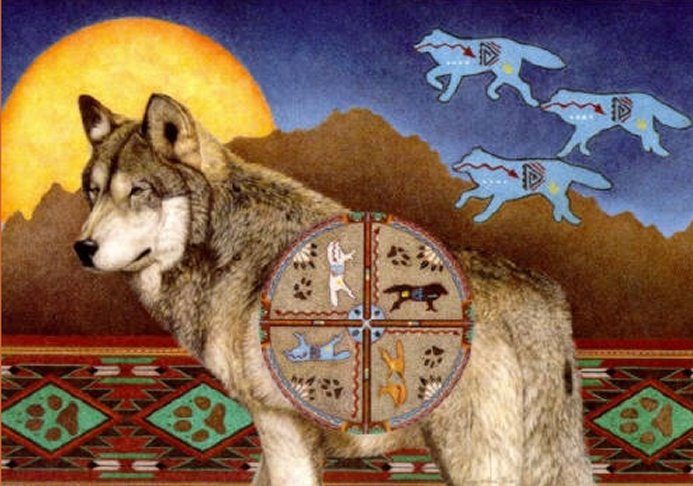A total of 3,000 centrifuges is the commonly accepted figure for a nuclear enrichment program that surpasses the experimental stage and can be used as a platform for a full industrial-scale program that could churn out enough material for dozens of nuclear weapons. Iran on Thursday signaled it will no longer cooperate with International Atomic Energy Agency experts investigating for signs of nuclear weapons programs, confirming that the probe — launched a year ago with great expectations — was at a dead end. Read the entire article. Recent talks the United States held with Iran are aimed at creating legitimacy for a potential attack against Iranian nuclear facilities, defense officials speculated on Sunday as Defense Minister Ehud Barak headed to Washington for talks with senior administration officials. Read the entire article. If we are going to go to war with Iran over the nuclear issue - and I think it is inevitable - the sooner the better. Waiting will only benefit Iran, much like waiting through the mid-30's allowed the Nazi's to go from extreme weakness to a war machine of sufficient size that it cost tens of millions of lives to defeat. The problem is exponentially more dangerous when the topic under discussion is a nuclear arsenal. We forget the lesson of Nazi Germany at our peril.
The Iranian theocracy's dash towards a nuclear arsenal as picked up speed as they make no attempt now to engage in even the motions of cooperation on the nuclear issue. The U.S. changed its policy and met as part of unilateral negotiations with Iran to no avail. Ahmedinejad has announced a near doubling in centrifuge capacity at Natanz, turning out enriched uranium on an industrial scale. There are many meetings going on between U.S. and the Israeli government. The immediate question is whether President Bush will deal with this problem while he is still in office or whether he will kick it down the road. The former is seeming more likely.
_________________________________________________________
The mad mullahs race towards a nuclear weapon grows ever apace. On Saturday, Ahmedinejad announced that Iran had doubled the enrichment capacity of its Natanz plant to 6,000 centrifuges. Iran has no use for this nuclear fuel in any sort of civilian energy program. Nonetheless, as Fox reported:
Moreover, Iran has announced a complete halt to cooperation with the IAEA and their probe of the nature of Iran's nuclear program. This also from Fox News:
Iran says it plans to move toward large-scale uranium enrichment that ultimately will involve 54,000 centrifuges.
Coming from Iranian Vice President Gholam Reza Aghazadeh, the announcement compounded international skepticism about denting Tehran's nuclear defiance just five days after Tehran stonewalled demands from six world powers to suspend activities that can produce the fissile core of warheads.
Besides demanding a stop to uranium enrichment — which can create both fuel and the nuclear missile payloads — the international community also has been pressuring Tehran to cooperate with the IAEA in its probe of allegations that Tehran hid attempts to make nuclear arms.
That investigation was launched a year ago under a so-called "work plan" between the Vienna-based agency and Tehran.
Back then, IAEA chief Mohamed ElBaradei hailed it as "a significant step forward" that — if honored by Iran — would fill in the missing pieces of Iran's nuclear jigsaw puzzle; nearly two decades of atomic work, all of it clandestine until revealed by dissidents nearly six years ago. And he brushed aside suggestions that Iran was using the work plan as a smoke screen to deflect attention away from its continued defiance of a U.N. Security Council ban on enrichment.
But the plan ran into trouble just months after it was put into operation. Deadline after deadline was extended because of Iranian foot-dragging. The probe, originally to have been completed late last year, spilled into the first months of 2008, and then beyond.
Iran remains defiant, saying evidence from the U.S. and other board members purportedly backing the allegations was fabricated, and on Thursday Aghazadeh appeared to signal that his country was no longer prepared even to discuss the issue with the Vienna-based IAEA. . . .
And a month ago, Bush radically reversed U.S. policy and took part directly in a meeting with Iran on its nuclear issue. The meeting, which also involved the EU-3, China and Russia was a joke, with Iran refusing to discuss nuclear enrichment then or in the future. Was that meeting designed to justify a U.S. attack on Iran? That is certainly looking more plausible as time goes on. This from the Jerusalem Post:
Barak will travel to Washington and New York and will hold talks with his counterpart Robert Gates, Vice President Dick Cheney, Chairman of the Joint Chiefs Admiral Michael Mullen, Secretary of State Condoleezza Rice and National Security Adviser Stephen Hadley.
. . . IDF Chief of General Staff Lt.-Gen. Gabi Ashkenazi returned to Israel on Sunday from a week-long visit to the US as Mullen's guest. Ashkenazi held talks with Cheney, Hadley and other senior officials with a focus on the Iranian nuclear program.
"There is a lot of strategic thinking concerning Iran going on right now but no one has yet to make a decision what to do," said a top IDF officer, involved in the dialogue between Israel and the US. "We are still far away from the point where military officers are poring over maps together planning an operation."
In recent weeks, Mullen has said publicly that he is opposed to military action against Iran which would open a "third front" for the US military which is currently fighting in Iraq and Afghanistan. . . .
Barak's talks in the US come a little over a week after the Bush administration sent its number three diplomat to Geneva to participate in European Union talks with Iran over its nuclear program.
The move led to reports that the US was changing its isolation tactic vis-à-vis Iran but Israeli defense officials speculated Sunday that the move was really a ploy to buy international support in the event that Bush decides to attack Iran in his last months in office.
"This way they will be able to say they tried everything," one official speculated. "This increases America's chances of gaining more public support domestically as well as the support of European nations which are today opposed to military action." . . .
Diplomatic officials have speculated that the Iran-US talks were also connected to the presidential elections.
Monday, July 28, 2008
Collision Course With The Mad Mullahs
Posted by
GW
at
Monday, July 28, 2008
1 comments
![]()
Labels: Ahmedinejad, centrifuges, china, EU-3, IAEA, Iran, irgc, Israel, Khamenei, mad mullahs, Natanz, Nazi Germany, nuclear, Russia
Thursday, November 22, 2007
Timeline: Iran's Nuclear Program
 August 2002: Iranian exiles say that Tehran has built a vast uranium enrichment plant at Natanz and a heavy water plant at Arak without informing the United Nations. [1]
August 2002: Iranian exiles say that Tehran has built a vast uranium enrichment plant at Natanz and a heavy water plant at Arak without informing the United Nations. [1]
December 2002: The existence of sites at Natanz and Arak is confirmed by satellite photographs shown on U.S. television. The United States accuses Tehran of “across-the-board pursuit of weapons of mass destruction.” Iran agrees to inspections by the International Atomic Energy Agency (IAEA).
February 2003: Iranian President Mohammad Khatami reveals that Iran has unearthed uranium deposits and announces plans to develop a nuclear fuel cycle. IAEA Director General Mohammed ElBaradei travels to Iran with a team of inspectors to begin probing Tehran's nuclear plans.
June 2003: ElBaradei accuses Iran of not revealing the extent of its nuclear work and urges leaders to sign up for more intrusive inspections.
August 2003: Traces of highly enriched weapons-grade uranium found at Natanz.
September 2003: More enriched uranium is discovered, prompting urgent calls for Iran to sign a voluntary protocol formalising a tougher inspection regime.
October 2003: After meeting French, German and UK foreign ministers, Tehran agrees to stop producing enriched uranium and formally decides to sign the Additional Protocol, a measure that extends the IAEA’s ability to detect undeclared nuclear activities. No evidence is produced to confirm the end of enrichment.
November 2003: ElBaradei says there is “no evidence“ that Iran is pursuing nuclear weapons. The United States disagrees.
December 2003: Iran signs the Additional Protocol at the IAEA headquarters in Vienna.
February 2004: Abdul Qadeer Khan, the godfather of Pakistan's nuclear bomb, is reported to have sold Iran nuclear weapons technology.
February 2004: An IAEA report says Iran experimented with polonium-210, which can be used to trigger the chain reaction in a nuclear bomb. Iran did not explain the experiments. Iran again agrees to suspend enrichment, but again does not do so.
March 2004: Iran is urged to reveal its entire nuclear programme to the IAEA by 1 June 2004.
June 2004: Tehran is criticised by the IAEA for trying to import magnets for centrifuges and for not offering “full, timely and pro-active“ co-operation with inspectors.
September 2004: The IAEA orders Iran to stop preparations for large-scale uranium enrichment. U.S. Secretary of State Colin Powell labels Iran a growing danger and calls for the UN Security Council to impose sanctions.
November 2004: Iran agrees to halt all enrichment activities during talks with the EU-3 (France, Germany and the United Kingdom), but pledges to resume in the future.
January 2005: IAEA inspectors are allowed into the secretive Parchin plant near Tehran.
April 2005: Iran announces plans to resume uranium conversion at Isfahan.
May 2005: The EU-3 warn that any resumption of conversion would end negotiations linked to trade and economic issues. Iran agrees to wait for detailed proposals from the Europeans at the end of July.
August 2005: Hardliner Mahmoud Ahmadinejad is installed as Iranian president, as Tehran pledges an “irreversible“ resumption of enrichment. Iran rejects the latest European proposals for resolving the nuclear crisis. Iran appoints a hardline politician, Ali Larijani, to lead the country's nuclear talks with the EU. Iran resumes sensitive fuel cycle work at its uranium conversion facility near Isfahan.
2 September 2005: IAEA report confirms Iran has resumed uranium conversion at Isfahan. The report says that the nuclear watchdog, "after two and a half years of intensive inspections," remains unclear on "some important outstanding issues." [2]
25 September 2005: Tehran rejects the new IAEA report. Iranian Foreign Minister Manuchehr Mottaki says his country remains committed to the Non-Proliferation Treaty. [3]
12 October 2005: The EU issues a statement calling on Iran to continue negotiations with the EU-3.
24 November 2005: A meeting of the IAEA Board of Governors postpones any action on Iran's nuclear programme. The move is aimed at reopening negotiations on a Russian proposal for a compromise that would allow Iran to enrich uranium, but only in Russia and under strict controls.
25 December 2005: Tehran formally rejects an offer from Moscow to enrich uranium for its nuclear programme in Russia. Iranian officials insist upon Iran's right to enrich uranium on its own soil.
10 January 2006: Iran removes UN seals at the Natanz enrichment plant and resumes nuclear fuel research. [4]
4 February 2006: The IAEA votes to report Iran to the UN Security Council. Iran ends snap UN nuclear inspections the next day.
14 February 2006: Iran restarts small-scale feeding of uranium gas into centrifuges at Natanz after 2-1/2-year suspension.
5 June 2006: EU foreign policy chief, Secretary-General of the EU Council Javier Solana, delivers a package of incentives from world powers if Iran agrees to halt uranium enrichment.
31 July 2006: The UN Security Council demands that Iran suspend its nuclear activities by August 31.
31 August 2006: The UN Security Council deadline for Iran to halt its work on nuclear fuel passes. IAEA says Tehran has failed to suspend the programme.
25 September 2006: Iranian Foreign Minister Manuchehr Mottaki says nuclear talks with European negotiators are "on track" and a diplomatic solution is possible. [5]
4 October 2006: EU foreign policy chief Solana says four months of intensive talks have brought no agreement on suspension of Iran's sensitive nuclear activities, and he adds that the dialogue cannot continue indefinitely.
12 November 2006: An Iranian Foreign Ministry spokesman says Tehran is pressing ahead with plans to expand its programme to enrich uranium and remains determined to install 3,000 centrifuges by March 2007.
23 December 2006: The 15-member UN Security Council unanimously adopts a binding resolution that calls on Iran to suspend its uranium-enrichment activities and to comply with its IAEA obligations. Resolution 1737 directs all states to prevent the supply or sale to Iran of any materials that could assist its nuclear or ballistic-missile programmes. It also imposes an asset freeze on key companies and individuals named by the UN as contributors to Iran's nuclear and missile programmes. Iran rejects the move as an "invalid" and "extralegal act" outside the bounds of the UN's charter.
25 December 2006: President Ahmadinejad responds to UN Security Council Resolution 1737 by saying the sanctions will have "no impact" on Iran's nuclear programme.
22 January 2007: Foreign Minister Mottaki confirms reports that 38 UN nuclear inspectors have been prohibited from entering the country in a list that was reportedly delivered to the IAEA; the next day, Tehran stresses that cooperation with the IAEA continues, despite the ban. The European Union urges all countries to enforce the recently passed UN sanctions against Iran.
21 February 2007: The UN Security Council's 60-day deadline ends for Iran to halt uranium enrichment. Iranian parliamentary speaker Gholam Ali Hadad Adel warns that a delay by Russia in completing Iran’s Bushehr nuclear plant would harm bilateral ties. His comments came after Russian nuclear officials' claim that lagging payments from Tehran could delay start-up of the facility.
22 February 2007: The IAEA says in a report that Iran has expanded its uranium enrichment program instead of complying with a U.N. Security Council ultimatum to freeze it. The finding clears the way for harsher sanctions against Tehran. The agency also said the Islamic republic continues building both a reactor that will use heavy water and a heavy water production plant — also in defiance of the Security Council.[5.1]
24 March 2007: The Security Council unanimously approves a resolution broadening UN sanctions against Iran for its continuing failure to halt uranium enrichment. Iranian officials call the new measures “unnecessary and unjustified.”
9 April 2007: President Ahmadinejad says Iran can produce nuclear fuel on an industrial scale. Ten days later, the IAEA confirms Iran has begun making nuclear fuel in its underground uranium enrichment plant and has started up more than 1,300 centrifuges to enrich uranium.
10 April 2007: Iran’s Minister of Foreign Affairs Mottaki says Iran will not accept any suspension of its uranium-enrichment activities and urges world powers to accept the “new reality” of the Islamic republic's nuclear programme.
23 May 2007: The IAEA says in a new report, issued to coincide with the expiration of a Security Council deadline for Tehran, that Iran continues to defy UN Security Council demands to halt uranium enrichment and has in fact expanded such work. The report adds that the UN nuclear agency's ability to monitor nuclear activities in Iran has declined due to lack of access to sites.
21 August 2007: Iran and the IAEA say they agreed to a work plan for answering outstanding questions about Iran's nuclear programme. [6]
4 October 2007: Diplomats say Iran has installed close to 3,000 centrifuges, enough to start refining usable amounts of nuclear fuel if they work without glitches.
20 October 2007: Saeed Jalili is named to replace Iran’s chief nuclear negotiator Ali Larijani, who resigned.
24 October 2007: The United States imposes new sanctions on Iran and accuses the Iranian Revolutionary Guard Corps of spreading weapons of mass destruction.
2 November 2007: The UN Security Council’s five permanent members (Britain, France, the United States, Russia and China) plus Germany discuss a third round of tougher sanctions.
15 November 2007: A report from the IAEA warned that Iran is fact decreasing its cooperation with the IAEA. “Iran has continued to shield many aspects of its nuclear program. Iran’s ‘cooperation has been reactive rather than proactive,’ the report said, adding that because of restrictions Iran has placed on inspectors the agency’s understanding of the full scope of Iran’s nuclear program is ‘diminishing.’”
The International Atomic Energy Agency report also confirmed that Tehran continued to defy the U.N. Security Council by ignoring its repeated demands to freeze uranium enrichment, a potential pathway to nuclear arms.
[7]
Update: 21 November 2007
[1] Timeline entries through August 2005 are quoted from "Timeline: Iran nuclear crisis," BBC News, 24 September 2005, http://news.bbc.co.uk/1/hi/world/middle_east/4134614.stm.
[2] "Timeline: Irans nuclear program," Reuters, 2 November 2007, http://www.reuters.com/article/worldNews/idUSL0218278120071102?pageNumber=2&sp=true.
[3] Timeline entries through December 2005 are quoted from "Factbox: Timeline Of The Iranian Nuclear Dispute," Radio Free Europe/Radio Liberty, 11 August 2005.
http://www.rferl.org/featuresarticle/2005/8/19C76894-2A3A-49D7-96A5-02039F66FD20.html.
[4] Timeline entries through August 2006 are quoted from "Timeline: Irans nuclear program," Reuters, 2 November 2007.
[5] Timeline entries through May 2007 are quoted from "Factbox: Timeline Of The Iranian Nuclear Dispute," Radio Free Europe/Radio Liberty, 11 August 2005.
[5.1] Iran Nuclear Chronology, CBS News :http://www.cbsnews.com/elements/2007/02/22/in_depth_world/timeline2504696_0_main.shtml
[6] Timeline entries through 2 November 2007 are quoted from "Timeline: Irans nuclear program," Reuters, 2 November 2007.
[7] "Iran fails to resolve nuclear questions," Financial Times, 15 November 2007:http://www.ft.com/cms/s/0/6f5974c8-9397-11dc-a884-0000779fd2ac.html;
"Report Raises New Doubts On Iran's Nuclear Program," New York Times, 15 November 2007 :http://www.nytimes.com/2007/11/16/world/middleeast/16nuke.html">
(Hattip: Right Truth)
Posted by
GW
at
Thursday, November 22, 2007
0
comments
![]()
Labels: Ahmedinejad, Arak, EU, EU-3, fuel cycle, heavy water, IAEA, Iran, Isfahan, Khamenei, Natanz, nuclear, Parchin, Polonium 210, Russia, Supreme Guide, timeline, uranium














































